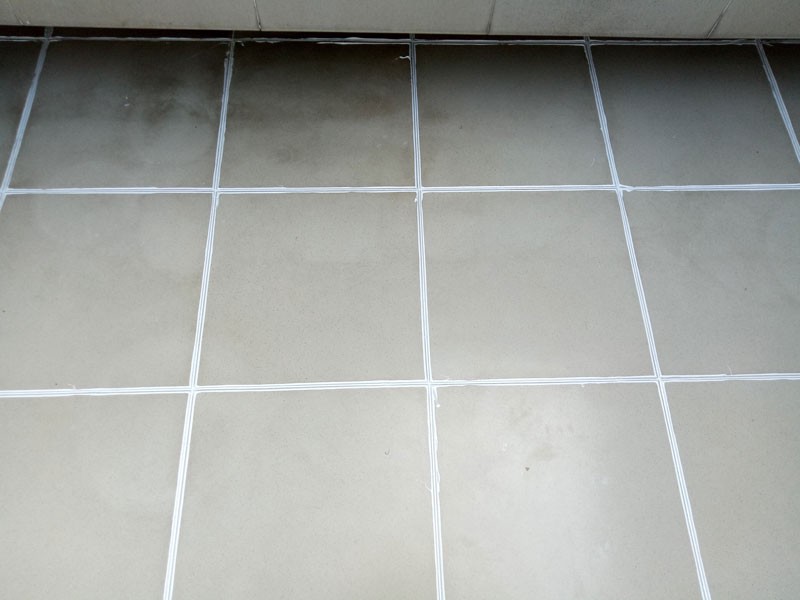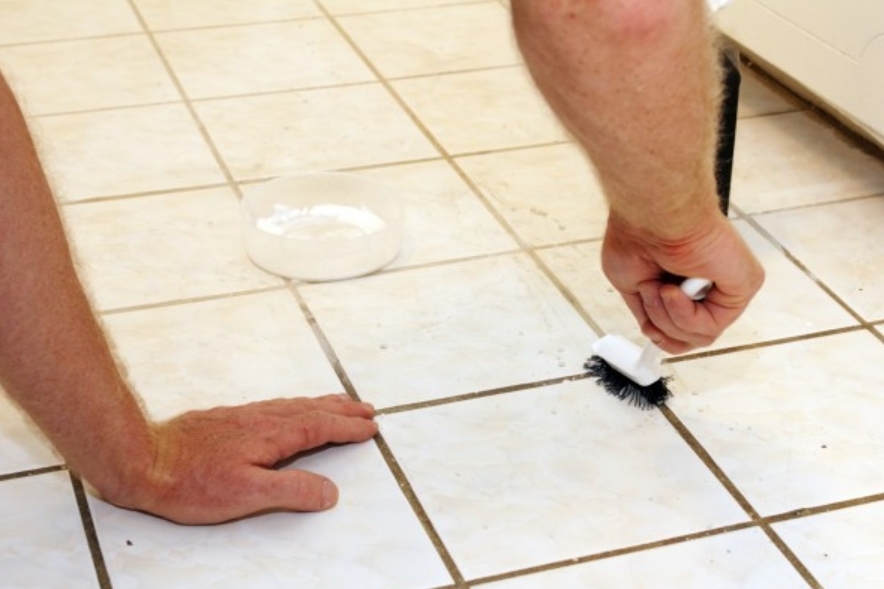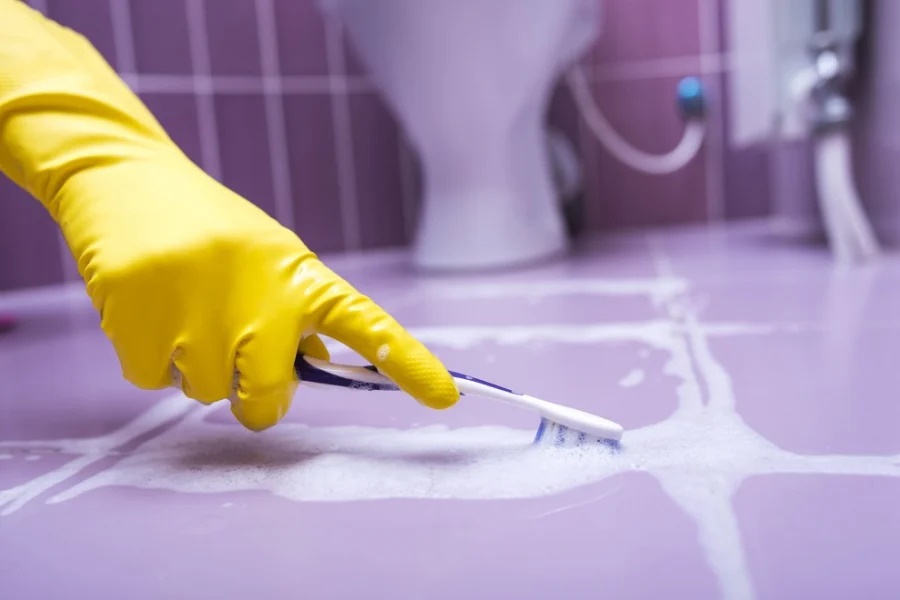The stains along the tile grout lines in the bathroom are a nuisance for homeowners as they accumulate more and become harder to clean the longer they are left unattended. Typically, tile grout is made from a mixture of sand, cement, and water. Most grout is white, but some homes opt for different colors.
Anywhere there is grout, whether on the bathroom floor or on the walls, it will absorb water and mold can potentially grow. To prevent the bathroom grout from becoming a breeding ground for bacteria and dirt, it is crucial to keep the bathroom clean and dry. Here are some measures to protect the tile grout and prevent mold growth:

1. Dry the bathroom after each use
Keep the bathroom dry by using a mop, cloth, or towel to dry it. If the bathroom has a ventilation fan, it is recommended to turn it on for air circulation. If you do not keep the bathroom dry, the grout in the bathroom will absorb moisture, and mold will quickly start to grow.
2. Clean the bathroom and scrub the grout weekly
You can use a neutral pH cleaner to clean the bathroom and scrub the tile grout lines.

3. Apply fresh grout annually
To prevent bacteria and dirt from adhering to the grout, especially mold, it is recommended to apply a layer of grout sealer on top of the existing grout once a year.
In case the grout is already affected by mold:
You can use one of the following methods to clean it:
– Use baking soda
Baking soda is a common and safe cleaning product trusted by many. You can apply it to whiten the grout lines by mixing baking soda and water in a 2:1 ratio to form a paste. Then, apply the paste to the grout lines, let it sit for 5 to 10 minutes for the baking soda to penetrate. Finally, use a brush to scrub the stains until the grout lines are clean.

– Use white vinegar
Vinegar is a readily available ingredient in every household and can be effective in cleaning. Combining vinegar and dish soap enhances the whitening effect on the tile grout. Mix half a cup of vinegar with a tablespoon of dish soap. Stir the solution well and pour it into a spray bottle if available. Spray or apply the solution to the grout lines that need cleaning, wait a few minutes for the solution to penetrate the grout. Finally, use a brush to scrub the stains and witness the effectiveness of the cleaning solution.
– Use lemon juice and salt
Lemon juice and salt both possess acidic properties and are capable of cleaning. They can be applied to whiten the tile grout lines. Mix lemon juice concentrate with salt in a 1:1 ratio, add a little water, and stir the mixture well. Then, apply the mixture to the grout lines that need whitening, wait for 10 to 15 minutes for the mixture to take effect, and use a cloth to wipe it again.
– Use toothpaste
It may sound unusual, but toothpaste contains whitening agents, so it can be applied to clean the grout lines. Apply toothpaste to a toothbrush and scrub the tile grout lines until they become whiter. However, to enhance the cleaning effect, you can combine toothpaste with vinegar or baking soda to create a paste and use a brush to scrub as mentioned above. The results will be surprising.

Source: An Nhiên – Vietnamnet
• Baking Soda Paste: Mix baking soda and water in a 2:1 ratio to form a paste, apply it to the grout lines, let it sit for 5-10 minutes, then scrub with a brush.
• White Vinegar Solution: Combine half a cup of vinegar with a tablespoon of dish soap, pour it into a spray bottle, apply it to the grout lines, wait a few minutes, and scrub.
• Lemon Juice and Salt: Mix lemon juice concentrate and salt in a 1:1 ratio, add a little water, apply the mixture to the grout lines, wait 10-15 minutes, then wipe with a cloth.
• Toothpaste: Scrub grout lines with toothpaste and a toothbrush for a whitening effect. For tougher stains, create a paste with toothpaste, vinegar, or baking soda.






























